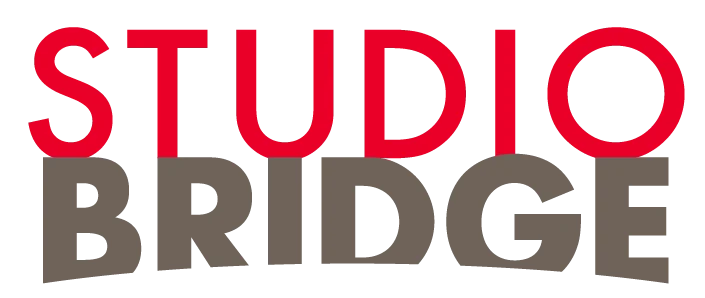Throughout human history, the concept of “hidden treasures” extends far beyond material possessions. It encompasses the wealth of knowledge, cultural practices, symbols, and innovations that have been passed down through generations, often concealed in myths, artifacts, or intangible cultural elements. Recognizing and exploring these treasures enriches our understanding of humanity’s past and inspires future progress.
Discovering these treasures allows us to appreciate the depth of human creativity and resilience. It fosters cultural identity, informs scientific advancements, and encourages a sense of curiosity vital for innovation. From ancient gems and coins to mythological symbols and modern technological marvels, the journey of uncovering hidden treasures is ongoing and ever-inspiring.
- The Concept of Treasure in Ancient Civilizations
- Hidden Cultural Treasures in Mythology
- The Evolution of Hidden Treasures
- Educational Value of Hidden Treasures
- «Le Zeus» as a Modern Illustration of Cultural and Educational Treasures
- Uncovering Non-Obvious Treasures in Human Knowledge
- Preserving and Valuing Hidden Treasures in the Modern World
- Conclusion: Embracing the Journey of Discovery
The Concept of Treasure in Ancient Civilizations
Ancient civilizations regarded both tangible and intangible elements as treasures that defined their cultural identity and social structure. Material treasures, such as gems, coins, and artifacts, symbolized wealth, power, and religious significance. For instance, Egyptian pharaohs accumulated gold and jewelry to showcase divine authority, while Roman emperors displayed their prosperity through elaborate coinage and monumental sculptures.
Non-material treasures—knowledge, myths, and cultural practices—were equally vital. These intangible assets served as repositories of collective wisdom, moral values, and social cohesion. Myths, in particular, played a central role in transmitting cultural values and explaining natural phenomena, often embedding moral lessons within divine stories.
Case Study: In ancient Greece, bronze coins used for everyday transactions exemplify the concept of accessible treasures. These small, durable objects were not only economic tools but also carried images and inscriptions that reflected civic identity and cultural symbols. Such coins were widespread and practical, representing the democratization of wealth and knowledge in daily life.
Hidden Cultural Treasures in Mythology: The Power of Deities and Symbols
Mythological treasures encompass symbols, stories, and divine figures that encapsulate a culture’s core values and worldview. These elements serve as windows into ancient societies, revealing their understanding of natural forces, morality, and human nature.
A recurring motif in Indo-European mythologies is the thunder deity—such as Zeus in Greek mythology, Thor in Norse tradition, and Indra in Vedic texts. These gods symbolize the primal power of nature, justice, and sovereignty. Their stories and symbols underscore societal norms and the importance of divine authority in maintaining order.
Connecting mythological treasures to modern interpretations, the figure of «Le Zeus» exemplifies how ancient symbols are reinterpreted in contemporary culture. While «Le Zeus» might not be a literal deity today, its modern incarnations—ranging from art installations to technological products—embody enduring cultural values. This illustrates how ancient treasures can inspire innovation and cultural appreciation, remaining relevant across ages.
The Evolution of Hidden Treasures: From Ancient Gems to Modern Marvels
Over millennia, humanity’s treasures have transitioned from physical artifacts to intangible cultural and scientific knowledge. While excavated relics like jewelry and coins provide tangible links to the past, today’s treasures often exist as ideas, symbols, and technologies that shape our future.
Technological advancements—such as imaging techniques, digital archives, and AI—play a crucial role in uncovering and preserving these treasures. For example, high-resolution imaging helps interpret ancient symbols on artifacts, revealing hidden inscriptions or patterns that were previously undecipherable. Similarly, digital reconstructions allow us to visualize lost cities or artifacts, making these treasures accessible to a global audience.
Example: Researchers employ advanced imaging and data analysis to decode ancient symbols, providing insights into historical trade routes, religious practices, and societal organization. This technological synergy bridges the gap between past and present, ensuring that these treasures continue to educate and inspire.
Educational Value of Hidden Treasures: Learning from the Past to Innovate the Future
Ancient knowledge remains a cornerstone for modern science and technology. For instance, the development of mathematical systems, such as the Greek alphabet, has profoundly influenced contemporary fields like computing and cryptography. The Greek numerical system and alphabet laid the groundwork for algorithms, coding, and data encryption.
Understanding historical contexts enhances our capacity for innovation. By studying ancient practices—like the use of early engineering techniques, astronomical observations, or linguistic structures—we gain insights that can be adapted to solve modern problems. This demonstrates that the most valuable treasures are not just artifacts but also the lessons embedded within them.
“The past contains the keys to future innovations—if we learn to read its hidden treasures.”
«Le Zeus» as a Modern Illustration of Cultural and Educational Treasures
While «Le Zeus» is a contemporary creation, it embodies the enduring symbolic power of ancient Greek mythology. Zeus, as the king of gods, represents authority, wisdom, and natural forces—concepts that resonate in modern design and technology.
«Le Zeus» exemplifies how ancient symbols can be reimagined to inspire innovation. Its modern reinterpretation merges traditional mythology with cutting-edge technology, demonstrating the timeless influence of cultural treasures. Through such examples, we see how ancient principles can inform modern aesthetics and functionality.
To explore how modern designs harness these ancient symbols and their educational significance, read more – hier / mehr about innovative projects inspired by classical mythology.
Deepening the Understanding: Uncovering Non-Obvious Treasures in Human Knowledge
Many hidden treasures are not immediately obvious. They lie at the intersection of myths, language, and scientific discoveries, revealing interconnected layers of human knowledge. For example, ancient practices in astronomy and navigation, based on mythological symbols, underpin modern GPS technology.
Furthermore, ancient symbolic systems influence contemporary fields. The Greek alphabet, initially a practical writing system, now forms the basis of mathematical notation and programming languages. In the gaming industry, mathematical formulas utilizing Greek symbols are fundamental in calculating probabilities like Return to Player (RTP), illustrating how ancient treasures persist in modern applications.
Recognizing these hidden lessons fosters a deeper appreciation for the continuity of human ingenuity and highlights the importance of interdisciplinary learning.
Preserving and Valuing Hidden Treasures in the Modern World
Preservation of cultural and scientific treasures presents ongoing challenges. Archaeological sites face threats from environmental factors and urban development, while digital data requires constant updating to remain accessible. Moreover, ensuring that intangible cultural assets like oral traditions and myths are passed to future generations demands active effort.
Technology plays a vital role in safeguarding these treasures. Digital archiving, 3D scanning, and virtual reality enable wider access and preservation. Education also fosters respect and curiosity, encouraging society to value both material artifacts and intangible heritage. Promoting awareness about the significance of these treasures ensures their continued relevance and helps prevent cultural loss.
By embracing responsible preservation practices, we honor our shared human legacy and inspire future generations to explore both obvious and non-obvious treasures.
Conclusion: Embracing the Journey of Discovery from Ancient Gems to Modern Marvels
The ongoing journey of uncovering hidden treasures reveals their lasting impact on our identity and future. Each artifact, myth, or scientific breakthrough is a piece of a vast puzzle that defines human civilization. Recognizing the importance of both material and intangible treasures encourages a mindset of continuous exploration and respect for our shared heritage.
As we advance technologically, our capacity to discover, interpret, and preserve these treasures grows. By understanding the interconnectedness of ancient symbols, myths, and innovations, we can foster a more informed and inspired society. The pursuit of hidden treasures—whether in archaeological sites or conceptual systems—remains a vital part of our collective evolution.
“The greatest treasures are often hidden in plain sight—waiting for curious minds to uncover their secrets.”


No Comments